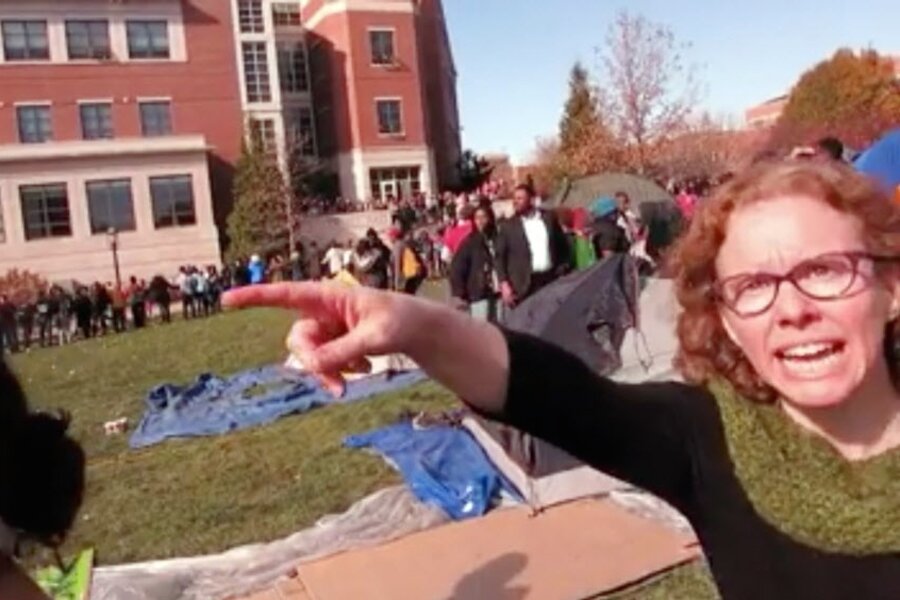On US college campuses, a debate over what is considered 'free speech'
Loading...
Students in America are angry.
Over what, exactly? The debate is deeply philosophical at the core. In one camp stand minority students who say they feel marginalized want to protect their safety. In the other camp are those who say they wish to uphold academia's longstanding tradition of fostering debate, and welcoming dissent, on sensitive issues.
The two forces collided in what is now a famous example from the University of Missouri, where ESPN photographer Tim Tai was blocked by a mob from documenting Missouri students protesting in a public space. The mob chanted “Go, go, go!” while Tai fired back, “The First Amendment protects your right and mine to be here.”
The Twitter account associated with the activists later explained, “We ask for no media in the parameters so the place where people live, fellowship, and sleep can be protected from twisted insincere narratives. It’s typically white media who don’t understand the importance of respecting black spaces.”
The Missouri case – which resulted in the resignation of the university's president – illustrates a deeper thread snaking across college campuses: a shift in thought about freedom of expression in academia. At Yale University, protests over a faculty’s email about Halloween costumes erupted into controversy that simmered for days. A top administrator at Claremont McKenna College resigned last week amid race protsts. The University of Southern California is devoting an entire fund to creating “diversity” talks. At Mount Holyoke, students cancelled a production of the play "The Vagina Monologues" because it failed to include transgender women.
In short, college administrators have a lot to deal with right now. Some commentators have complained that what’s missing is adult leadership.
“Too often university presidents, their boards of trustees and leading political figures default, and quickly, to the most reactionary progressives in modern student bodies,” wrote The Wall Street Journal. “We want to be clear about this, because so many of these university leaders regard themselves as principled liberals. But their timidity is putting at risk the classical liberal values that are the essence of the idea of a university.”
The deeper question university administrators are faced with is how to reconcile an issue as intangible as creating “safe spaces” for its student body – a safe space that, as was the case with Missouri, is exclusive of discussion, and even media coverage.
On Tuesday The New York Times published a report of collected grievances from students around the country.
The list is long – and varied. Grievances vary from witnessing a student fly a Confederate flag on campus to a Latina woman being told to “go back to Iran.”
This isn’t the first time American academia has wrestled with so-called political correctness. In the 1980’s and ‘90’s, student protests were surging. But as reported by The Atlantic, today's protests have a different basis. “That movement [in the '80s and '90s] sought to restrict speech (specifically hate speech aimed at marginalized groups), but it also challenged the literary, philosophical and historical canon, seeking to widen it by including more-diverse perspectives. The current movement is about emotional well-being.”
The movement to restrict hate speech from campuses in the 80’s was largely successful; campuses saw a paradigm shift in the vocabulary concerning minority students. But today's movement is harder to define, at least in part because many see it as a paradoxical movement that does something not usually associated with campus protests, and that is to limit freedom of expression.








